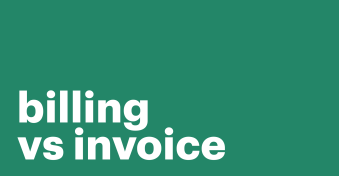Content marketing and SEO are different areas of digital marketing with similar goals.
To produce high-quality content, you want to present your brand authentically and cover topics that are of interest to your audience.
The goal of search engine optimization is to help your website climb search engine results pages for queries relating to your business. One element of this is creating relevant content, but there are also link-building and technical SEO aspects you need to consider.
If you get both your content marketing strategy and SEO right, it can really help to boost your e-commerce sales. And combining the two practices can help you to get some of the best results possible.
So, I’m going to explain how you can blend your content marketing and SEO efforts to achieve your business goals.
01. Consider what types of content will help you build links
One of the most important facets of successful SEO is building backlinks. This entails convincing the owners of other high-quality websites to include a link back to yours in their content.
There are quite a few different ways to build backlinks, but one of the keys to this strategy is having as much high-quality content on your website as possible.
Nowadays, high-quality content can’t just be a well-researched wall of text. Of course, you still want it to be comprehensive, but you also want to make it as engaging (and shareable) as possible.
Using visuals to increase conversions is now a well-known practice, but they can also help you to get the exposure and links you need.
Infographics allow you to explore complicated concepts or present stats in an engaging and easily digestible way. Plus, they’re eye-catching and ideal for jazzing up a piece of written content.
This is why other sites will be happy to share high-quality infographics that support a point they’re trying to make in their own articles or blog posts.
And, when they do share your infographic with their own audiences, they should provide you with a credit and backlink.
If you’re interested in creating infographics but have no idea where to start, check out Venngage’s guide to making infographics in 5 easy steps. They’ll also provide you with templates you can use, so no design skills are required.
Creating videos can also help you to build a lot of links back to your site. People love to watch videos, so a lot of sites like to use them to keep their readers engaged.
But, some companies don’t have the capacity to create their own, which means sites in your niche could be open to sharing yours. Again, just like if they share your infographics, they should provide you with a backlink, which is great for your SEO.
Interactive content tends to be particularly shareable and link-worthy, too. This can include the likes of quizzes, calculators, games, and more.
Think about what kinds of interactive content your target audience are likely to be interested in and other companies within your field will be willing to share with their own website visitors. You can also share your content as part of your social media marketing to get more eyes on it and increase your chances of securing backlinks.
If you can create high-quality content that’s relevant to your ideal customers, but not so specific to your company that it’s hard to share, you can earn lots of links back to your website.
And this can do wonders for your search engine rankings. It’s all about creating a strong relationship between content marketing and SEO.
02. Only target the most relevant keywords with your content
To create content that pops up as a result for relevant search queries, you want to ensure that it targets the most appropriate keywords.
This helps you attract the right audience, improve the user experience, and avoid keyword cannibalization, where too many of your webpages are competing for attention under the same search term.
When choosing keywords, searcher intent is the most important factor to consider.
Here’s how you can identify keywords to use:
- Use a professional tool like Ahrefs Keyword Generator, Semrush, or Google’s Keyword Planner
- Input generic keywords related to your niche
- Pick keywords that lend themselves to the type of content you want to produce
- Look at the content that already ranks for those terms to get inspiration
- Create new content that expands on the existing content, answers its questions in a new way, or provides the most information in one place
Picking the right keywords is less of a numbers game and more about optimizing your content by targeting the most relevant terms.
For example, you won’t want to target a commercial search term like “women’s shoes for sale” in an informative guide, even if it gets a lot of search.
Someone who has typed this into a search engine is most likely looking to make a purchase, rather than doing their research. So, if they’re sent to a blog post on your website, they’re going to be disappointed.
When you’re choosing target keywords for your content, make sure the intent behind each key phrase matches what you’re providing.
When you’re writing product page copy or choosing keywords for your PPC campaigns, commercial keywords will work well. But it’s best to stick to questions, long-tail keywords, and research-based search terms when you’re creating and optimizing informative content.
03. Create great content that will help to boost your E-A-T
E-A-T stands for expertise, authoritativeness, and trustworthiness. It’s a term that comes from Google Search’s quality rater guidelines, and it’s something the search engine has been paying a lot more attention to since 2018.
Search engines only want to point their users in the direction of trustworthy and accurate information, so website owners need to create content that shows they’re knowledgeable sources of high-quality information.
There are a few ways to do this effectively.
The first is to create content that is helpful to your target audience and reflects your expertise in the field.
MyCanadaPayday is a loan provider with a blog that offers a wealth of helpful financial information. Their in-depth exploration of how student loans work is a great example.
Someone who comes to this blog looking for general information on student loans is automatically going to consider MyCanadaPayday an expert on the topic of finances and borrowing money. As a result, they will be much more likely to seek the company out in the future if they require a loan.
Plus, search engines will be more inclined to see the site as a knowledgeable and trustworthy source of information, which can lead to better overall rankings on the SERPs.
Similarly, the employment lawyers at Lawsuit Legal have created a guide to workers’ rights. If someone is looking for this kind of information, they might be close to asking a firm for legal help to deal with an issue at work.
And, if they come across this guide, they’ll be confident that Lawsuit Legal are authorities in this field.
Not only does this build trust with potential customers, but it also signals to search engines that the company is a knowledgeable and reputable source of information. So, creating this guide could go a long way towards boosting the company’s Google rankings.

Slack, the workplace messaging service, also curates and publishes high-quality content on its site to build trust with prospective customers and search engines. They primarily do this with webinars and free ebooks.
Driving growth and consumer loyalty with Slack Connect is one such ebook, which explains how their service can help sales teams liaise with their external clients.
This demonstrates that the company understands common pain points of business owners, and shows search engines that it’s an authority in the field of workplace communications. This helps to boost the site’s E-A-T and improve its search engine rankings.
04. Produce content for different stages of the buying journey
People at different stages of the buying journey will be searching for different information, so you need to create great content with this in mind.
The three main stages of the buyer journey are as follows:
- Exploration: They don’t know about your product/service or why they might need it.
- Comparison: They’re aware of your product/service and think they might need it, but are still considering some of your competitors.
- Buying: They want your product/service, but may still be deciding on a model or package, and might still be considering one other strong competitor.
You need to consider these different stages of the sales funnel, and create successful content that corresponds to them.
Let’s see what that looks like in practice.
Introductory, top-of-the-funnel content should be basic and informative. At this point, you don’t want to present a strong argument for your product or service over any other.
Instead, focus on explaining the basics of your industry, and introducing visitors to the types of services that might help them.
Service Provider Pro, a provider of client portal software for businesses, targets this stage of the buyer journey with an explanation of why your agency should have a client portal.
This works for two reasons.
One, it targets consumers who might have no idea what a client portal is, or what its benefits are. And, two, it lets SPP directly plug their content to visitors who might not be aware of any of their competitors yet.
By directly presenting why agencies should use a client portal, they are able to secure buyer interest early. If they did their job well enough, visitors might decide then and there to invest in their service.
More likely, though, SPP has succeeded in generating early awareness and interest, which could earn them conversions later on.
Creating content like this can also be great for your SEO.
For instance, this article ranks well for introductory search terms. Then, when potential customers continue their research to decide which client portal will work best for their business, readers will have SPP in mind and will be far more likely to invest in this option.

SquareSpace, a website hosting and design software provider, targets people in the middle of the sales funnel with helpful resources, webinars, and a blog with case studies of businesses that successfully use their website templates and hosting service.
Informational blog posts and case studies can offer a great way to build trust with your audience because they provide you with an avenue to demonstrate your knowledge and past successes.
Plus, again, they can be great for your SEO.
When people search for how to build a website successfully, they are likely to find SquareSpace’s content. Then, when these visitors are ready to make a purchase, they may be more likely to consider SquareSpace for their domain hosting.
At the bottom of the funnel, you’ll want to create content that will help your prospective customers to make the best possible purchase to suit their needs.
There are a number of approaches you can take.
You could put together a comparison piece that shows how your services stack up against your competition, you could write a buying guide that outlines everything someone should consider before making a purchase, or you could offer an in-depth guide to using your platform or product so people can get a feel for what it’s like.
You want to target searchers who already have a good idea of what they’re looking for. With a final confirmation that yours is the business that can provide it, they’re more likely to invest in your product or service then and there.
05. Consider whether local content would make sense for your business
If you have a business with one or more brick-and-mortar stores, or you learn from Google Analytics that you have a lot of customers in one area, you may want to improve your local content marketing efforts, too.
Local search engine optimization can help give the likes of Google a better idea of where you’re based, so search engines can send the most relevant people your way.
There are many aspects to perfecting your local SEO, but one tactic is to publish website content that helps to contextualize your location.
For example, you could write about the local community, events happening nearby, or even other small businesses in your area. Just make sure all of the local content your produce is still relevant to your business.
If you have multiple bases, dedicated location pages are an absolute must. Here are a couple of examples of well-executed location pages you can take inspiration from.

Another business located around the Washington, D.C. area is the restaurant and bookstore chain Busboys and Poets.
For each location, including the flagship store on 14th & V St., they include a unique description, photo, and relevant business information like opening hours and an easy way to get directions.
By adding high-quality localized content to these pages, you can give search engine algorithms a clear sign that you’re based in and serve a particular area. So, they’ll take this into account when ranking your site for relevant queries.
Website location pages are one of a handful of important channels to help you reach your prospective customers.
As part of a well-formed customer communication plan, the purpose of your location page is to make it easy for people to find you, and to provide the best ways for them to contact you.
Plus, they can provide search engines with lots of clues as to where you’re located, making it easy for them to rank your site for relevant online searches in your area.
06. Answer common customer questions with your content
If someone is searching for the answer to a question that’s relevant to your business or industry, you’ll want to rank well for that query.
This means you need to be creating good content that answers common customer questions as part of your SEO content marketing strategy.
There are two main ways content marketers source relevant customer questions.
The first way is through keyword research.
Oftentimes, when you search a general keyword, you’ll also find related questions that people are searching.
If you can address these common questions in an article or on an FAQ page, you can target these and drive more high-quality organic traffic to your website.
Additionally, you can collect common questions from your existing customer service channels. Comment fields, consumer satisfaction surveys, and social media profiles on the likes of Twitter or LinkedIn are all great places to source these.
In fact, your customer service team, who spend a lot of their time communicating with your customers, probably already have a very good idea of some of the commonly asked questions that you could address directly on your website.
Answering potential customer questions before they can even think to ask them is a great way to boost your SEO, build your authority in the field, and increase trust between potential customers and your organization. These are the most important metrics.
Let’s take a look at some strong examples.
FreshBooks is an accounting software provider that does a great job of publishing articles that address common questions about accounting, finances, marketing, and more.
For example, they have a post called “Should I hire an accountant for my small business?”, which addresses all of the most common queries related to this kind of concern.
FreshBooks’ target audience is made up of small business owners and freelancers, so this is the type of question they’ll be asking themselves.
By creating guides like this, the company can rank for relevant queries, drive the right people to their website, and ensure they’re top of mind when someone decides they want to invest in some accounting software.

The RealFX real estate group is another company that regularly updates its blog to answer common questions its clientele might have.
For instance, their guide to inspection contingencies does a brilliant job of answering a query the company will get a lot. When you’re creating similar content, take FreshBooks’ and RealFX’s lead and make the main questions you’re addressing the title tags.
This will assure potential customers that you’re going to answer their questions quickly and easily, so they’ll be far more likely to click through to your site.
Not only does this kind of content help you to rank for relevant queries on the SERPs, but it also helps to prove your expertise and authority, which we already know will be great for your SEO, too.
Finally, Joy Organics, a CBD oil and product vendor, has created a master post that explains everything someone might want to know about CBD-infused items.
Their ultimate guide to “What is CBD oil?” is broken down into five chapters, which discuss the historical context of these products, what they can be used for, and more.
It answers a lot of FAQs on the topic, which means people have a good chance of coming across this piece when they’re doing their research. Then, if they decide to buy products, they’ll be likely to pick them up here.
This resource is also so helpful that other websites operating in the niche of CBD could easily reference it to give their visitors more information on the topic, giving Joy Organics even more authority through earned backlinks.
With a few small tweaks to your customer service process, like answering FAQs right on your website, you’ll continue to see a huge increase in your search engine rankings and sales.
07. Create content for different segments of your audience
When creating content for your target audience, keep in mind that your consumer base is not all one homogenous whole.
Even if you have a very specialized target audience, it’s likely still made up of a variety of age groups, gender identities, and personal preferences that you would do well to cater to.
Different types of people will also likely be searching for different types of information, so take that into account when planning and developing your content. Every new piece of content should be directed at a specific segment of your customer base.
Here’s how to execute this well.
Crowd Work News, a forum for freelance jobs, caters to a wide audience with all manners of freelance needs. The site focuses on a variety of different professions, age groups from young adults to retirees, and different lifestyle needs.
Whatever someone’s reason for exploring freelance work, Crowd Work News has information and advice that can help them.
And they make this very obvious by breaking their website up into different sections for different types of workers. This will also help the website to rank for a wide range of queries relating to their niche.
Babbel, a language-learning software, uses their blog called the Babbel Magazine to provide additional language-related content for their visitors.
By offering coursework in a variety of different languages, they inherently have to cater to many different nationalities and cultures with their content.
Because of this, they’ve been able to build a community of multilingual and multicultural users who are able to share their stories and help the company curate content that satisfies the many different customer groups they serve.
Creating content that caters to a variety of different customer groups is a great way to use customer segmentation to increase your sales.
Summary
They might be two sides of the same coin, but you now know the difference between SEO and content marketing, as well as how they can work together. Both help you get the attention of your ideal customers and achieve the sales you need.
By creating content that targets keywords that correspond to different stages of the buyer journey, you can reach the people who are most likely to be interested in your products or services.
Plus, by publishing high-quality, informative, and shareable content, you can boost your E-A-T and earn plenty of backlinks.
You should also consider whether your company needs a local SEO strategy, and create content that targets different segments of your audience so everyone is catered to.
Answering your customers’ questions before they even ask them can also help you to demonstrate your knowledge, authoritativeness, and how much you understand your audience.
For more tips on how to merge your sales and marketing campaign to increase your profits, check out PandaDoc’s blog, which offers articles on all the best smarketing practices.


